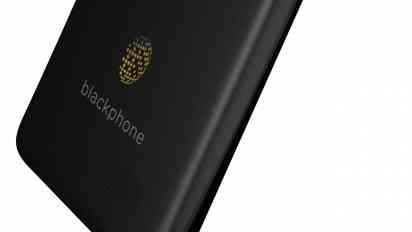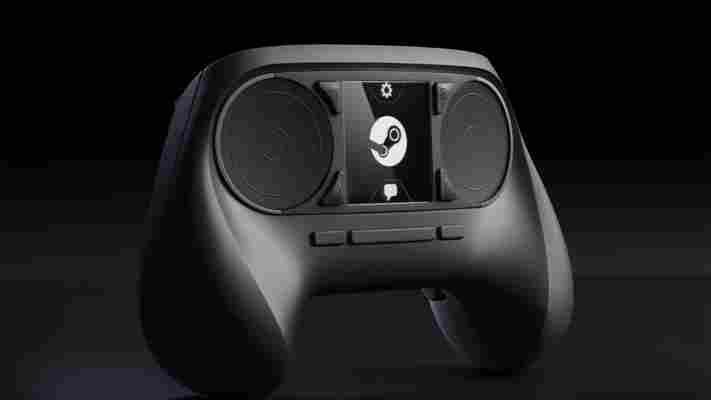Following numerous leaks and revelations about the surveillance capabilities of the NSA and other international security organizations, the Blackphone has arrived promising greater protection for your personal data.

The smartphone, announced last month by encrypted communications firm Silent Circle and Spanish smartphone maker Geeksphone , is now available to pre-order for $629.00. The first handsets are expected to ship in April and even then, you certainly won’t find this in a carrier store.
While we haven’t obtained a full run-down of the specs, what’s shown on the Blackphone site looks promising: a quad-core 2 GHz processor, 2GB of RAM, 16GB of onboard storage and support for LTE networks. It might not be bleeding edge, but the device should be competitive with the current crop of mid-range and high-end Android smartphones.
Although the device runs Google’s mobile OS, Silent Circle has integrated its own suite of apps, software and tweaks for a solution that it’s called ‘PrivatOS’. Some of these, such as Silent Phone , Silent Text and Silent Contacts , are available on other Android and iOS devices, but the following are exclusive to the new handset: Blackphone Security Center, Blackphone Activation Wizard and Blackphone Remote Wipe.
The result? Searching with this security-focused handset will be anonymous, rather than trackable. All bundled apps will be privacy-enabled and Wi-Fi can be disabled automatically until you reach a trusted or specified network. App permissions can be controlled with greater precision and basic functionality including calls, texts and video chats will be private.
While security and its relationship with technology is a widely debated subject at the moment, it remains to be seen whether people are prepared to give up a recognizeable smartphone brand such as Samsung and in favor of a specialized device such as the Blackphone.
Visit our MWC 2014 page for more coverage
Read Next: Blackphone: A new privacy-focused smartphone from Silent Circle and Geeksphone
➤ Blackphone ( Store )
HTC Desire 200 emerges as a low-end, 3.5 Android smartphone with a 5MP camera and Beats Audio
The Desire 200 has appeared on the HTC website today, validating a number of leaks that have emerged over the last week or so. It’s a new, low-end Android smartphone that could potentially replace the Desire C or even the Desire X , which have consistently offered this level of hardware alongside a much smaller display.

The device, spotted by Engadget , is petite and rather attractive in its design, taking some cues from its critically acclaimed older brother, the HTC One . The speaker grill fitted just above the display and curved back being a notable case in point.
There’s a 3.5-inch HVGA display, although there’s no screen resolution listed yet on the HTC website. It weighs 100 grams in the hand and is powered by a 1GHz Qualcomm Snapdragon S1 processor – the bare minimum needed to take advantage of Android’s most compelling features.
The device also comes 512MB of DDR1 RAM and 4GB of internal storage, backed up by a microSD slot for up to 32GB of additional space. The HTC Desire 200 also runs on an unknown version of Android with Sense, HTC’s custom skin, applied over the top.
It’s notable that the screenshots available on the HTC website show the standard Android home screen with the company’s iconic clock widget – there’s no BlinkFeed in sight, which suggests that this is running on an older version of Sense.
HTC has rather wisely opted for a 3G modem, cable of hitting HSDPA speeds of up to 7.2Mbps, as well as a 5-megapixel rear-facing camera and 1230 mAh battery for up to 10.9 hours of talk time on GSM.
As with almost all HTC devices, it also comes with Beats Audio integration straight out of the box – an advantage or disadvantage, depending on your musical tastes and knowledge of audio levels.
Pricing and availability is yet to be disclosed, but the HTC Desire 200 appears to be another eye-catching, if rather unremarkable budget Android smartphone to add to the company’s existing portfolio.
Valve unveils Steam Controller with dual trackpads for its next-gen Steam Machines
Valve unveiled the Steam Controller today, a unique piece of hardware with dual trackpads for playing video games in the living room.

The Steam Controller features two large, concave trackpads on either side, in addition to four face buttons labeled A, B, X and Y. Both trackpads are clickable, similar to the analog sticks on a PlayStation 3 or Xbox 360 controller, allowing the entire surface to double-up as an extra button. Two shoulder buttons are also located on the back.
Valve says the controller is built with “high-precision input technologies” that focus on low-latency performance; an area that competitive players are always concerned about. Nestled in the controller are dual linear resonant actuators; small, electromagnets which are fitted underneath the trackpads and offer various force and vibration effects.
“It is a higher-bandwidth haptic information channel than exists in any other consumer product that we know of,” Valve said. “As a parlour trick they can even play audio waveforms and function as speakers.”
In the center of the console is a clickable touchscreen that will allow players to navigate the Steam interface with complex gestures without selecting specific menus or options by mistake. Developers will also be able to implement the touchscreen into their games using an API offered by Valve.
The controller is designed to work with all of the games currently playable on Steam, as well as upcoming releases. Valve argues that traditional controllers “force us to accept compromises” and believes that the Steam Controller will vastly improve the accuracy and fidelity of player input.
Earlier this week, the company unveiled a free, Linux-based operating system called SteamOS , which has been optimized to run video games in the living room. Players will be able to install the platform on their existing hardware, or access it with new Steam Machines being built by third-party manufacturers. The Steam Controller announced today will run both on Steam and Steam Machines running Steam OS.
Valve says it’s also designed a high-performance prototype, which many believe to be the long-awaited and highly-anticipated Steam Box .
SteamOS and Steam Machines is a balancing act for Valve, as it tries to open up its hugely successful distribution platform to a larger number of players. Steam Machines, like the upcoming PlayStation 4 and Xbox One, will be designed with ease of use in mind.
Valve says there will be several boxes covering “an array of specifications, price, and performance”, but there’s likely to be a large number of PC enthusiasts who also want the ability to upgrade their hardware at their own speed. That is, after all, how PC gaming stays ahead of traditional consoles built by Sony, Microsoft and Nintendo – at least from a specs standpoint.
A hardware beta has already been detailed, but ultimately players will have to wait until next year before they can spend some of their hard-earned cash on a system running SteamOS.
